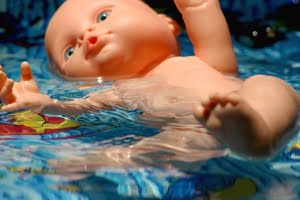Would you spend $0 to $40 and spend 3 to 5 hours in a CPR class to learn how to save lives? Bystanders, parents or neighbors with CPR training could mean the difference between life or death for a heart attack or drowning victim. In the few minutes it takes the ambulance to arrive, the victim’s chance of survival rapidly decreases. The goal of CPR classes is to teach you what to do between the time you dial 9-1-1 and the arrival of the professionals. You will know what to do because you learned it in class. You will be scared spitless, but you will know what to do.
What is CPR?
CPR (Cardio Pulmonary Resuscitation) is first aid for two different medical emergencies: the rescuer either keeps blood flowing by compressing a heart attack victim’s chest or provides oxygen to a victim of respiratory failure by blowing into the victims mouth to get air to their lungs. In some cases the rescuer may have to do both.
Finding CPR Class Providers:
Class times and schedules change constantly but a CPR class in metro Phoenix (or any other city) is as close as your phone book and as soon as this weekend. The local fire department will either give CPR classes or know who gives them nearby. The local hospital will know who gives CPR classes because most of their employees have to be certified. Look them up in the phone book and call the main number. I found over 20 classes in 10 minutes of phone time, scattered from Goodyear to Carefree and Queen Creek. You can find classes on days, evenings, and weekends to suit your schedule.
Your employer may offer classes through their HR department. If the CEO has a heart attack in the company cafeteria, they’d like to have some employees with CPR training nearby.
Other sources of information about classes:
American Heart Association – 1-800-242-8721 (nationally)
American Red Cross – 602-336-6490 (Arizona)
Arizona Chapter National Safety Council: First Aid & CPR – 602-234-1698 (Arizona)
Levels of CPR Certification:
The names of the classes are not standardized, even though the course material is standard. Typical “Community level” classes teach how to perform CPR on adults and larger children. Infant and child” CPR teaches how to perform CPR on infants and small children – if you are a daycare provider or a babysitter this is an important class. Some community CPR classes include “AED training”, to teach you how to use the electronic defibrillation units on a heart attack victim.
“Professional level” classes for first responders, such as ski patrollers, EMTs, police and firemen, teach all of the above, plus how remove airway obstructions for infants, adults and children. They also teach how to use defibrillation equipment, insert tubes to keep airways open, use oxygen tanks, artificial breathing devices, and two-person CPR techniques.
Certification lasts 2 years. At the end of the 2 years you can usually “re-cert” by demonstrating the correct techniques. If you have a long-expired certification you may be asked to take the written test or even an complete class.
Cost of a CPR Class: The class cost varies from $0 in the city of Carefree for its residents to over $60 from commercial providers in the Phoenix area. Expect to pay about $30 to the fire department and you won’t be surprised. Always ask your employer if they consider CPR training a reimbursable expense.
What will you learn in a CPR class? Wear comfortable clothing and bring knee pads. This is hands-on training.
First, you will get a brief explanation of blood flow, air flow and why they have to be artificially provided as soon as possible for a victim. The Cardio part teaches you how to detect a heart beat and place the victim in a position that opens the airway. You will learn where to place your hands, how hard to push, and how fast to push. You will practice this on a plastic dummy until your instructor is happy with your technique.
The Pulmonary part teaches you how to correctly blow air into the victim’s lungs in mouth-to-mouth respiration. You will practice this on a plastic dummy until your instructor is happy with your technique. NOTE: There are shields that protect the rescuer against anything contagious the victim might have – but if it’s your child you won’t care.
You will practice combined Cardio Pulmonary Resuscitation: alternating between doing chest compressions and breathing.
An important point you will also learn is when not to do CPR.
